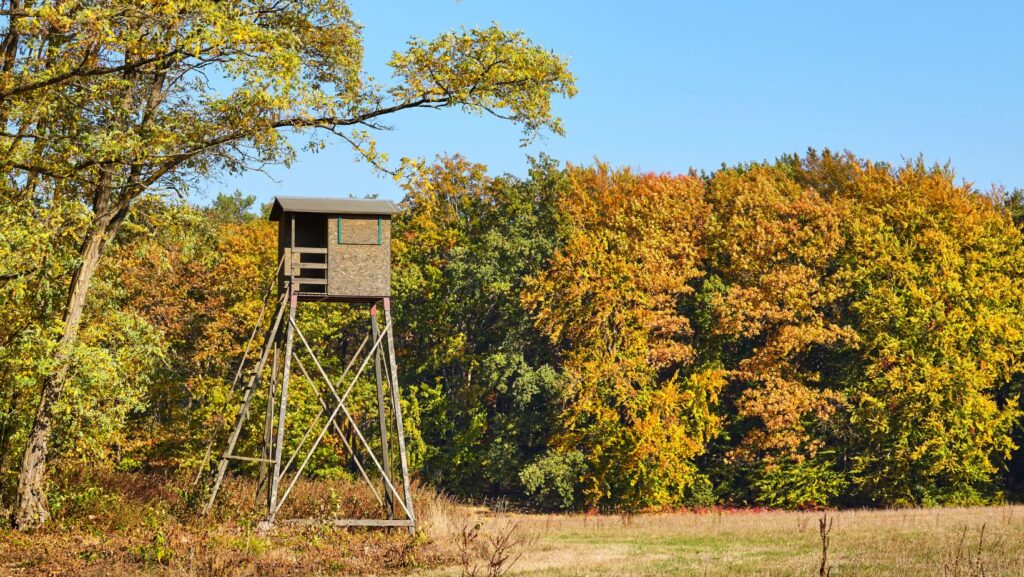As an avid hunter, I know the importance of having a reliable deer blind. Building your own DIY deer blind can be a rewarding and cost-effective way to enhance your hunting experience. In this article, I’ll share my tips and tricks for creating a functional and comfortable deer blind that blends seamlessly into the natural surroundings.
From selecting the right location to choosing the best materials, I’ve got you covered with practical advice to help you build a deer blind that meets your specific needs. Whether you’re a seasoned hunter looking to upgrade your setup or a beginner eager to try your hand at DIY projects, building a deer blind is a fulfilling endeavor that can take your hunting game to the next level.
DIY Deer Blind
When building a DIY deer blind, selecting the right location is crucial for a successful hunting setup. Here are some key points to consider:
- Optimal visibility: I look for spots that offer a clear line of sight to the deer’s natural path.
- Blend with surroundings: It’s essential to choose a location where the deer blind can blend seamlessly with the environment. This helps in avoiding detection.
- Accessibility: I prefer places that are easily accessible yet secluded enough to not disturb the wildlife.
In Choosing the Right Location for your diy deer blind, keep these factors in mind to enhance your hunting experience and increase your chances of a successful hunt.
Selecting the Best Materials
When building my DIY deer blind, I always prioritize durability and camouflage. Here are some key factors to consider when selecting materials:
- Weather Resistance: Opt for materials that can withstand various weather conditions to ensure longevity.
- Camouflage Capabilities: Choose materials that blend seamlessly with the surroundings to avoid standing out to deer.
For DIY deer blind construction, I recommend the following materials:
| Materials | Benefits |
| Weatherproof Wood | Durable and weather-resistant option |
| Camouflage Fabric | Excellent for blending into the environment |
| PVC Pipes | Lightweight and easy to work with |
By using these materials, I ensure my DIY deer blind is not only sturdy but also effectively conceals me during hunting sessions.

Designing Your Deer Blind
When designing your diy deer blind, it’s essential to consider key factors that can enhance its effectiveness in the field. Here are some tips to help you design a successful and functional deer blind:
- Location: Choose a strategic location that provides a clear view of the surroundings and is accessible for hunting purposes.
- Size: Determine the size of your deer blind based on the number of hunters it will accommodate and the equipment they will be using.
- Layout: Plan the interior layout to maximize space efficiency and ensure comfort during long hunting hours.
- Windows: Install Windows that are easy to open and close, allowing for quick and quiet shots at game.
- Ventilation: Incorporate Ventilation openings or vents to circulate air and prevent the build-up of odors.
By considering these aspects during the design phase, you can create a diy deer blind that enhances your hunting experience and increases your chances of a successful hunt.
| Statistics | Data |
| Average DIY Deer Blind Construction Time | 8-12 hours |
| Estimated Cost Range | $200-$500 |
Building Techniques and Tips
When building a DIY deer blind, accuracy and sturdiness are crucial. Here are some tips to consider:
- Secure Foundation: Start with a solid base to ensure stability throughout the structure.
- Quality Materials: Opt for durable materials that can withstand outdoor elements for longevity.
- Proper Ventilation: Incorporate vents to prevent condensation and regulate temperature inside.
- Weatherproofing: Seal any gaps or openings to keep the interior dry and comfortable during adverse weather conditions.
- Camouflage: Use natural materials and colors to blend the blind seamlessly into the surroundings.
I find that focusing on these aspects during the construction process enhances the functionality and effectiveness of a DIY deer blind in the field.

Enhancing Camouflage And Blending
When building a DIY deer blind, enhancing camouflage and blending are crucial for maximizing its effectiveness in the field. Here are some key strategies I always keep in mind:
- Choose the right colors: Opt for natural tones that match the surrounding environment to blend seamlessly with the landscape.
- Add vegetation: Incorporate branches, leaves, and other natural elements to break up the outline of the blind and mimic the surrounding foliage.
By paying attention to these details and implementing effective camouflage techniques, my DIY deer blind is better equipped to blend in with its environment and provide me with the element of surprise during hunting expeditions. Additionally, with the use of longer-range rifles often recommended in shooting magazines, I can easily spot a deer from a greater distance and ensure a successful hunt.



